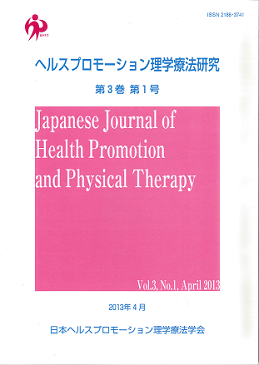Volume 3, Issue 3
Displaying 1-7 of 7 articles from this issue
- |<
- <
- 1
- >
- >|
ORIGINAL ARTICLES
-
2013 Volume 3 Issue 3 Pages 97-101
Published: October 01, 2013
Released on J-STAGE: March 18, 2014
Download PDF (353K) -
2013 Volume 3 Issue 3 Pages 103-107
Published: October 01, 2013
Released on J-STAGE: March 18, 2014
Download PDF (354K)
SHORT REPORT
-
2013 Volume 3 Issue 3 Pages 109-112
Published: October 01, 2013
Released on J-STAGE: March 18, 2014
Download PDF (323K) -
2013 Volume 3 Issue 3 Pages 113-117
Published: October 01, 2013
Released on J-STAGE: March 18, 2014
Download PDF (391K) -
2013 Volume 3 Issue 3 Pages 119-122
Published: October 01, 2013
Released on J-STAGE: March 18, 2014
Download PDF (336K) -
2013 Volume 3 Issue 3 Pages 123-127
Published: October 01, 2013
Released on J-STAGE: March 18, 2014
Download PDF (575K)
FIELD REPORT
-
2013 Volume 3 Issue 3 Pages 129-133
Published: October 01, 2013
Released on J-STAGE: March 18, 2014
Download PDF (453K)
- |<
- <
- 1
- >
- >|
